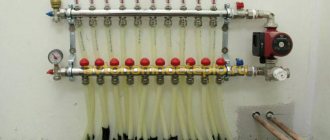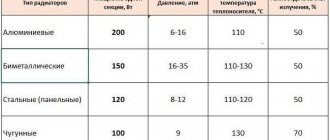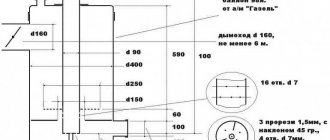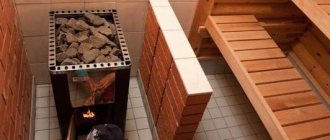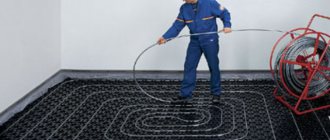Features of heating stoves with wood
Wood-burning stoves effectively heat residential and industrial premises. Firewood can be found in any area. However, today it is no longer possible to talk about this fuel as modern and economical. Firewood is gradually replacing solid fuel briquettes.
To understand why this happens, you need to remember the disadvantages of wood heating:
- To burn with wood, you need to chop it up and put it in woodpiles. All this is quite labor-intensive and takes a lot of time and effort. Moreover, it is not always possible to fold them neatly, since the logs come out in different sizes.
- A significant drawback is that firewood is sometimes damp if unscrupulous suppliers have not taken care of its permissible moisture level. Lighting wet wood is not easy.
- Compared to wood briquettes, ordinary firewood produces much less heat per cubic meter of fuel.
- After the firewood, a large amount of ash remains that needs to be raked out, and wood briquettes burn as much as possible.
- Firewood burns unevenly, briquettes burn evenly and without crackling.
- Approximately 10 kg of firewood burns in the stove in one and a half to two hours, then you need to add a new portion of fuel to maintain the desired temperature in the room.
Firewood is cheaper than briquettes for heating, but loses in convenience and the amount of heat generated.
How to make biofuel with your own hands
If you have no problems purchasing ethanol, which is found in every pharmacy, then you can prepare high-quality biofuel for fireplaces yourself without any difficulties. If the aesthetic component is important, then gasoline with a high octane number of good quality can be used for the additive and the flame will look natural.
It should be noted that the quality of gasoline for preparing biofuel can be determined by its transparency and lack of odor.
When producing biofuel, the proportion must be observed - to 20 parts of ethanol you need to add 1-2 parts of gasoline and mix thoroughly.
During long-term storage, separation of the mixture may occur, so it is better to prepare biofuel in small portions before direct use.
If after some time you notice that the liquid has separated, then before pouring it into the firebox of the bio-fireplace, simply mix the ingredients well again.
A little trick: if during the burning process you sprinkle some natural oil on the ceramic firewood (for example, fir, cedar, etc.), then the aroma of these trees will spread throughout the room, which will create the effect of natural logs burning in the fireplace.
Thus, biofuel allows you to create the effect of the presence of a real fireplace even in an ordinary city apartment.
Moreover, visually, unless you say so yourself, of course, none of your guests will be able to distinguish a bio-fireplace from a real fireplace, since it creates exactly the same comfort in the room. At the same time, the pleasure from a fireplace-type stove running on biological fuel is incredible, and there is no hassle with it.
What and how are briquettes made from?
Wood waste is used to make wood fuel briquettes. Briquettes are pressed sawdust for the stove, prepared in a special way. First they were crushed, dried, and then put under a press. Sometimes they do without drying.
The binding composition of fuel briquettes is a safe organic compound. There are varieties of Euro firewood that are pressed without an adhesive link.

After the press, the raw materials are transformed into dense bars of the same size, which can be used for combustion. Sometimes they are additionally burned. It depends on the manufacturer and the technology he uses. Modern solid fuel, briquettes, replace firewood for barbecues and fireplaces. There will be no usual crackling sound, but there will be an even flame without burning, flying embers.
The production of briquetted fuel is beneficial where there is suitable waste from the main production. For example, in the woodworking industry these will be wood briquettes, and in agriculture the most common briquettes are made from sunflower husks. The highest heat transfer is obtained from wood briquettes made from oak and vegetable briquettes from sunflower husks.
Cost of wood briquettes
In Moscow and the region, you can purchase forms of this type from various tree species, often when ordering from 5 tons, the price will be changed, this is a kind of discount for a wholesale buyer.
I can only give approximate numbers, but they are worth a look. The package consists of 12 pieces, often the weight does not exceed 10 kg, which is quite convenient. I would like to highlight the following types:
- Birch sawdust – 6500 rub. per ton.
- Oak dust – 8500 rub. per ton.
- Wooden specimen made of oak – 9,700 rubles. per ton.
It is better to find out all the exact prices directly from consultants; I advise you to take a closer look at specialized sites, where you can find all the important information without leaving your private home.
The advantage of using briquettes for heating
Briquettes have many advantages, for which consumers value them:
- fuel briquettes are easy to store due to their neat shape and uniform size;
- using briquettes, you can save on the volume of prepared fuel, since their heat transfer is 1.5-2 times higher than that of conventional firewood;
- burn for a longer time in any stove: when wood needs 2-3 hours to burn, briquettes will give off heat for 4-5 hours;
- briquettes burn with an even flame, very quietly;
- While the briquettes are burning, a constant temperature is maintained in the furnace, which does not decrease even when the fuel is almost burned out;
- emit less smoke and leave behind less ash;
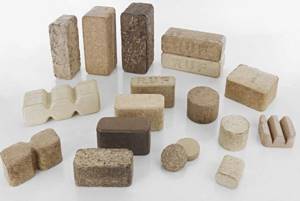
- the chimney becomes less clogged and does not need to be cleaned frequently;
- briquettes from different manufacturers are stored from one to five years;
- this fuel is environmentally friendly, its combustion does not harm human health;
- ideal for long-burning stoves;
- You can purchase such fuel not by cubic meters, but by kilograms, which in many cases is more convenient;
- When using briquettes as solid fuel, the stove will look much neater.
Wood briquettes burn softly, but produce a lot of heat. They burn 99 percent.
In briquettes that have been properly stored, the mass of water is no more than 9 percent.
Comparative characteristics of furnace fuel
The ease of use and efficiency of a heating stove largely depend on the properties and characteristics of the fuel used.
Let's consider the main ones:
- Physical state
. Heating systems can use solid fuels and gas. The first option remains the most popular to this day.Many users do not recognize alternatives to solid fuel for the stove and are in no hurry to switch to gas even if they have the opportunity to do so. The fact is that, despite the high efficiency, the use of gas is not always economically justified. Its environmental friendliness may also raise questions. And when building a stove yourself, you shouldn’t use gas at all - any specialist will confirm this statement.
- Cost-effectiveness ratio
. Different types of fuel have different calorific values. This parameter is measured in kilocalories or kilojoules and reflects the amount of heat released during the complete combustion of one unit of combustible material - kilogram, cubic meter or liter. The higher the specific heat of combustion, the lower the fuel consumption.The values of this indicator vary significantly. As a rule, the calorific value of wood is much lower than that of coal or gas. But the cost of these types of fuel is also different, so conclusions about their effectiveness can only be drawn after making a special calculation, which should take into account:
- room heating power;
furnace efficiency;
- mass or volumetric fuel consumption;
- price.
- Combustion temperature
. The temperature at which a particular fuel material burns determines its heat transfer rate. However, the connection between these two characteristics is not so obvious. At a high combustion temperature, it becomes difficult to “control” heat transfer, and most of the heat released during fuel combustion simply evaporates into the chimney.This can be counteracted by complicating the design of the furnace.
For the manufacture of heating systems designed for combustion temperatures above 1100 °C, special fire-resistant materials are used. It is worth mentioning that such high values are typical for gas and some types of liquid fuel. The average combustion temperature of wood ranges from 600-900 °C.
As a rule, firewood used as fuel for slow-burning stoves turns out to be more efficient and profitable. During operation of the heating device, the firewood smolders quietly and continues to efficiently release heat until the stack is completely burned out. The efficiency of such structures can reach 80-85%.
- Burning rate
. In homemade stoves of simple design, the connection between the rate of fuel combustion and the efficiency of the heating system is especially clear. The higher the burning rate, the lower the furnace performance. To effectively regulate the release and proper distribution of heat, it is necessary to either complicate the design or artificially slow down the combustion process.The most “unstable” fuel in this regard is coal, which flares up very quickly and begins to slowly smolder already on the threshold of complete burnout of the portion. With such fuel characteristics, it is difficult to achieve high efficiency of the heating system.
- Fuel watering
. The letter W is used to denote this parameter. Water, together with minerals and nitrogen, is part of most types of solid fuels. All these components do not take part in combustion and only reduce the calorific value of the combustible material. As for water, heat is spent not only on its evaporation during the combustion process, but also on the combination of released oxygen with atmospheric nitrogen. The degree of dryness is one of the most important characteristics of combustible materials. Good heating oil should have a minimal amount of moisture. Dry wood burns quickly and has an excellent calorific value. For firewood with a moisture content of 30-50%, this value is reduced by half. - Ash content
. To determine the ash content of a fuel material, its mass is divided by the amount of non-combustible solid residue formed by mineral impurities. In technical documentation, this parameter is designated by the letter A. If, for example, its value is 5%, this means that after combustion of 1 kg of solid fuel, 50 g of ash remains.Ash content to a certain extent affects the calorific value of the fuel. The more flammable components it contains, the higher the heat transfer will be. Therefore, the ash content of high-quality heating oil is, as a rule, relatively low.
However, in some cases, a moderate amount of remaining ash is only welcomed by household owners. It can be used as a natural and very effective fertilizer.
- Environmental friendliness
. The main components responsible for the combustion of any type of furnace fuel include carbon and hydrogen, as well as volatile sulfur. The latter is very harmful, since upon combustion it forms toxic oxides - anhydrides, which have an extremely negative effect on the environment.Fuel with low sulfur content is preferable from the point of view of not only ecology, but also safety for the heating system. The service life of a stove that uses low-sulfur fuels to fire it increases.
Having correctly calculated all of the above characteristics and their ratio, you can begin choosing fuel.
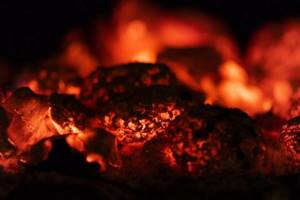
The temperature at which a particular fuel material burns determines its heat transfer rate.
Disadvantages of fuel briquettes
Wood briquettes have disadvantages that need to be taken into account when purchasing them:
- briquettes cannot be stored or stored outdoors, as they can get caught in the rain and crumble; in extreme cases, they will burn poorly;
- low resistance to mechanical damage;
- When purchasing these products, you need to inquire about the expiration date; some types lose their properties after just a year of storage;
- they do not produce a bright flame, which not everyone likes when lighting a fireplace;
- the cost of briquetted fuel is still higher than that of conventional firewood;
- briquetted fuel is not available in all regions;

It should be noted that the higher cost of briquettes still pays off due to its high heat transfer and combustion duration. And in many cases, you can even save on fuel if you switch to briquettes. Heating the stove with “pressed logs” is much more comfortable than with ordinary firewood.
Rules of use and precautions
Bioethanol, which is part of biofuel, is a particularly flammable substance, and when using it, you must follow and observe certain safety measures:
- Never add fuel to an open flame or a fuel tank that is not cool. Before refueling, it is necessary to extinguish the device and wait for it to cool (about 15-20 minutes).
- It is prohibited to use straw, paper, wood or other flammable materials to ignite biofuel. It is allowed to use only a special long metal lighter, electric ignition or long match.
- It is prohibited to store fuel canisters near a burning fireplace or other source of open flame.
- It is recommended to store biofuel out of the reach of children.
- If fuel is spilled during the process of refueling the biofireplace, it must be thoroughly wiped off with an absorbent cloth.

General operating rules:
- It is necessary to store the container with biofuel in a place away from open fire and heating devices.
- Ignition of biofuel in the burner should be done with a special lighter.
- If biofuel gets on the surface of the biofireplace, the floor or any other surfaces, the drops must be thoroughly wiped with a dry absorbent cloth.
- Biofuel can only be added to an extinguished and cooled eco-fireplace.

In order for an eco-fireplace to please its owners with an even and pleasant burning, it is necessary to properly supply it with high-quality fuel.
There are several criteria that will make it extremely difficult to make a mistake with your choice.
- First of all, you need to choose fireplace products that have been on the market for more than one year and have proven themselves well. The seller must have the necessary documents for biofuel on hand.
- It is also worth paying attention to the performance indicator and choosing a biofuel that will meet the needs of the fireplace owner.
- When opened, the liquid should not emit unpleasant odors that hit the nose sharply. It is important that the expiration date stated on the label has sufficient remaining time remaining.
Only by choosing high-quality products can you be sure that an ecological fireplace will decorate your home and operate as safely as possible.
What types of briquettes are offered to consumers
Several types of briquetted fuel can be purchased on the domestic market. They differ from each other not only in shape, but also in density, and, accordingly, in the level of heat transfer. Consumers choose based on characteristics such as price, quality and practicality.
Types of fuel briquettes:
- fuel briquettes RUF;
- Euro briquettes PINI KAY;
- ordinary cylindrical briquettes;
- fuel briquettes from coal, peat.
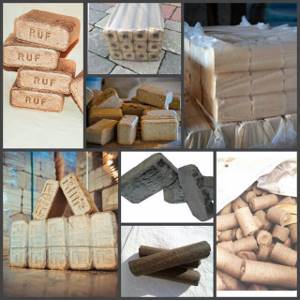
Each type of briquetted fuel has its own pros and cons, so you can choose which one is more convenient to use in this case. Pressed sawdust for stoves, which go through a longer manufacturing process, will be more durable, calorific, but also more expensive. Quality, naturally, adds up to the price of the product.
Since briquetted fuel is quite expensive, you need to choose a really high-quality product that matches its price category. If you use high-quality wood briquettes, you can save on fuel.
Top 3 wood briquette boilers
Based on my experience, I will highlight the three best briquette boilers in terms of price-quality ratio.
Cooper Practice 8
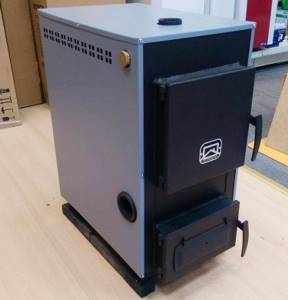
This boiler belongs to the budget option of equipment and takes third place; it is quite safe and functional. I would like to note the spacious compartment for collecting ash; it will be very easy to care for the device.
ZOTA Topol M
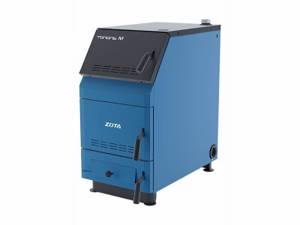
It has a long burning time, which brings the device to the second level of the rating. Mechanical control allows you to monitor the process as carefully as possible, and if you purchase a remote control, the comfort will be at a high level.
Basalt board insulation was a great addition that improved performance.
Protherm Beaver 50 DLO

The boiler is in first place in the ranking because of its power, it is 39 kW. The firebox is quite long; an element measuring 55 cm can fit into it.
I would like to mention the positive aspects: high strength of the components, the thermometer is built into the body and convenient operation.
By loading briquettes for combustion, you can observe combustion for 4 hours, which is a good result. The body is made of high quality steel, which means that the device will last a long time.
Solid fuel briquettes RUF
Externally, RUF briquettes (euro firewood) look like white brick; they also come in wood color. The raw materials are compressed under high pressure.
RUF briquettes are obtained from high-quality wood waste, which does not contain bark and other illiquid waste from the woodworking industry. It is not difficult to distinguish briquettes: each log has the inscription RUF stamped on it. No harmful chemicals are used for gluing sawdust in this type of fuel, so it is absolutely safe for human health.
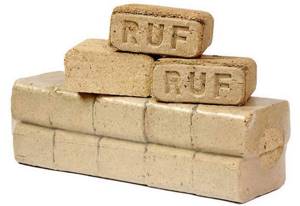
After the combustion of such briquettes, no more than 1 percent of ash remains. The permissible humidity of products is from 7 to 13 percent. RUF fuel is very convenient to use when lighting stoves and fireplaces in country houses, as they burn for a long time and evenly.
In terms of heat transfer, they are much more profitable than firewood, as they provide one and a half times more heat. They are easy to transport, load, and store. They are not afraid of dampness, but, of course, they cannot be put into water. The high efficiency of Euro firewood has already been appreciated by many consumers.
How much are?
The price of briquettes for heating a furnace depends on the technology and material from which the product is made.
- Alternative fuel of the Pini-kay type made from pine needles will cost an average of 8,900 rubles. for one ton, from birch - from 9,500 rubles.
- RUF briquettes are cheaper: sawdust 6500, pine needles 6000, pine and birch 6500, birch 6900 rubles.
- Nestro briquettes are the most inexpensive: 7500 per ton. Peat briquettes will cost the stove owner 8,000 rubles, and coal briquettes – 9,500 rubles.
You can purchase briquettes in specialized stores, as well as on websites on the Internet. Online shopping will be a little more profitable, since you will not have to pay for the services of consultants and renting store premises. But in the store you can personally see the quality of such a purchase, which is very difficult to do via the Internet.
Eurobriquettes PINI KAY
They are shaped like square pencils without lead. This hole is provided by the manufacturing technology to create additional traction. Therefore, they have very high thermal output. Before reaching consumers, the briquettes were pre-fired for strength and removal of excess moisture.

Such briquettes are more expensive than firewood and many other types of fuel. Easy to transport and fold for storage. Their shape is ideal for fireplaces. They are taken into nature instead of firewood for fire pits. There is no equivalent in terms of heat transfer to briquettes made of wood and sunflower husks using PINI KAY technology. No binders of inorganic origin are used in the production of briquettes using PINI KAY technology. They are compressed at high temperature and under high pressure. This releases the substance lignin, which glues the sawdust together.
In terms of their performance properties, PINI KAY briquettes are significantly superior to many analogues.
Conventional cylindrical heating briquettes
Cylindrical briquettes for stoves are made from sawdust and other small woodworking waste.
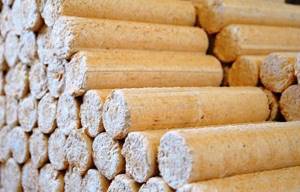
They are pressed under pressure, adding a non-toxic adhesive base. The fuel is inexpensive, however, has low strength. It quickly disintegrates and crumbles if improperly transported and stored. Cylindrical briquettes are afraid of moisture. Their main advantage is their relatively low price.
Peat and coal briquettes
Briquetted peat fuel is good for use in furnaces and boilers with controlled air supply. Gives a stable powerful flame. It has a high ash content. Peat briquettes smoke more than regular dry firewood. However, the combustion duration is twice as long. This type of fuel is especially popular in regions where there is an abundance of peat, and it costs less than regular firewood.
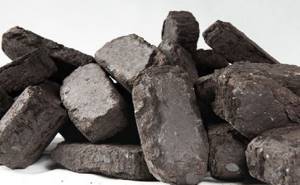
Such fuel does not have very high heat transfer. Summer residents use the ash left over from the combustion of peat briquettes to fertilize their garden plots.
Coal briquettes differ in quality, since different raw materials and manufacturing technologies are used for their production. Clay, coal tar, molasses or lime can be used to glue coal dust briquettes together. All this affects the “flammability”.
The shape and density of coal briquettes affects the duration of combustion. However, compared to ordinary coal, after burning coal briquettes, only 3 percent of ash remains (from hard coal 10 percent).
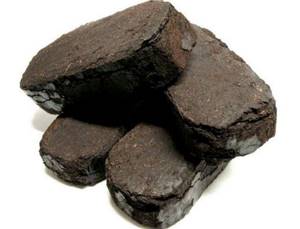
Charcoal briquettes cannot be used for barbecues. The requirements for the premises where the boiler operates using coal briquettes are quite stringent. Therefore, this type of fuel is usually exchanged in industrial boiler houses.
Where can briquettes be used?
Fuel briquettes are a fairly versatile material and are widely used not only for heating, but also in other cases. Let's figure out where they can be used.
Their use is possible:
- for heating residential premises with an area of up to two hundred square meters;
- on railways;
- for heating systems of warehouses and other non-residential premises;
- in autonomous boilers that serve as a heating system for entire villages;
- on hiking trips;
- in saunas and baths.
Briquettes for a stove or fireplace are universal and safe, so their use is possible in both open and closed firebox designs.
